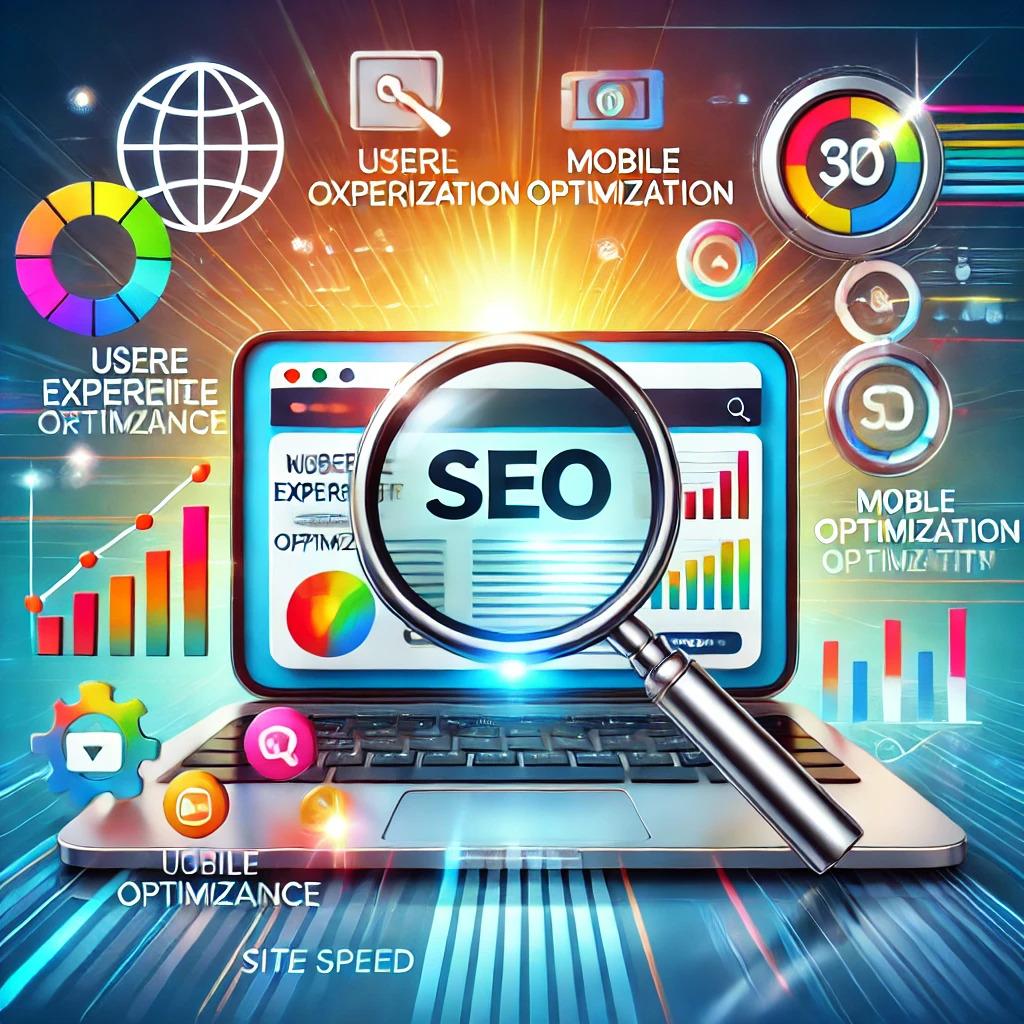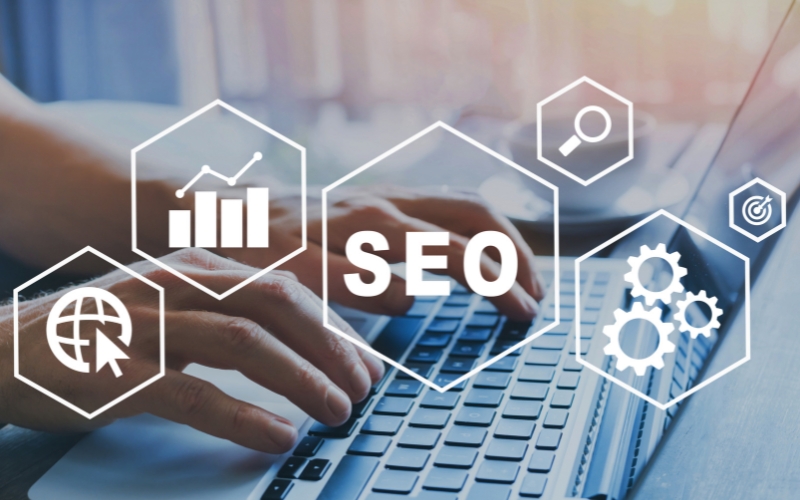
In today’s competitive digital landscape, optimizing your website for search engines is more crucial than ever. Onsite SEO services play a pivotal role in enhancing your website’s visibility and attracting high-quality traffic. By focusing on elements like keyword placement, technical performance, and user experience, onsite SEO ensures that your website not only ranks higher in search results but also provides a seamless browsing experience for visitors. This article explores how onsite SEO works, why it matters, and the tangible benefits it offers to businesses aiming to thrive online.
Understanding Onsite SEO: What It Is and Why It Matters

Onsite SEO, also known as on-page SEO, refers to the practice of optimizing individual web pages to improve their rankings and attract more relevant traffic from search engines. Unlike offsite strategies, such as link-building, onsite SEO services focus on enhancing the elements directly within your control—your website’s content, structure, and design.
At its core, onsite SEO involves tailoring various elements on a webpage, such as meta titles, meta descriptions, header tags, and keyword usage, to align with search engine algorithms. However, it is not just about appeasing algorithms; it also focuses on improving user experience. A well-optimized site ensures that users can easily navigate your pages, find relevant information, and enjoy a seamless browsing experience. This synergy between algorithm optimization and user satisfaction makes onsite SEO indispensable.
One critical aspect of onsite SEO services is keyword optimization. By strategically placing keywords in content, headings, and meta tags, businesses can signal to search engines what their pages are about, making it easier for potential customers to find them. For example, a local bakery might optimize its homepage with phrases like “freshly baked bread in [city]” to attract customers searching for bread in their area.
Another key component is improving content quality. Engaging, relevant, and well-structured content not only appeals to readers but also earns favor with search engines. Pages with high-quality content tend to rank better, as they are more likely to meet the intent of the search query. For this reason, professional onsite SEO services often include content audits and recommendations to ensure alignment with best practices.
Technical elements also play a crucial role in onsite SEO. Factors like page speed, mobile responsiveness, and secure browsing (HTTPS) significantly impact rankings and user satisfaction. Slow-loading or poorly optimized pages can frustrate users and lead to higher bounce rates, signaling search engines that your site may not offer the best experience.
Key Components of Onsite SEO That Impact Traffic

To increase website traffic effectively, it is crucial to focus on the key components of onsite SEO. These elements not only enhance search engine rankings but also create a better user experience. Leveraging onsite SEO services ensures these components are optimized for maximum impact.
Meta Tags and Descriptions
Meta tags, including titles and descriptions, are vital for improving click-through rates. They serve as the first point of interaction with potential visitors when your site appears in search results. Professional onsite SEO services ensure that meta tags are keyword-rich, compelling, and concise. For example, a well-optimized title might read, “Affordable Web Design Solutions – Boost Your Online Presence,” strategically embedding primary keywords.
Keyword Optimization
Proper keyword placement across content, headings, and URLs is a cornerstone of onsite SEO. Keywords inform search engines about the relevance of your pages to specific queries. Experts providing onsite SEO services analyze high-performing keywords and naturally integrate them into your content without overstuffing. This practice ensures that your pages align with user intent, leading to increased organic traffic.
Internal Linking
Internal links guide users and search engines through your website. They help distribute link equity, improve crawlability, and encourage visitors to explore more pages. For instance, linking blog posts to service pages can channel traffic from informational content to conversion-focused areas. Skilled onsite SEO services design strategic internal linking structures to enhance user engagement and ranking potential.
Content Quality
High-quality content is critical to onsite SEO success. Engaging, informative, and well-structured content captures user attention and keeps visitors on your site longer. Additionally, search engines favor content that addresses user queries comprehensively. Providers of onsite SEO services often perform content audits to ensure your pages deliver value while aligning with SEO best practices.
Technical Elements
Page speed, mobile-friendliness, and secure browsing are technical factors that directly impact user experience and rankings. Slow-loading or non-responsive pages can drive users away, increasing bounce rates. Through advanced technical audits, onsite SEO services optimize these elements, ensuring seamless user experiences across devices.
By focusing on these key components, onsite SEO services create a solid foundation for sustained traffic growth. Businesses can achieve higher search rankings, attract more visitors, and improve engagement by addressing these elements strategically.
The Role of User Experience (UX) in Onsite SEO

User experience (UX) plays a critical role in the effectiveness of onsite SEO services, as it directly influences how users interact with your website and how search engines rank your pages. A seamless, user-friendly website not only attracts more traffic but also ensures visitors stay longer, engage with your content, and convert into customers.
Site Speed and Performance
Site speed is a fundamental aspect of UX and a significant factor in search engine rankings. Pages that load quickly improve user satisfaction and decrease bounce rates. Search engines prioritize fast-loading websites because they offer a better experience for users. Through professional onsite SEO services, businesses can optimize their site speed by compressing images, leveraging browser caching, and minimizing code, all of which contribute to improved performance and higher rankings.
Mobile-Friendliness
In today’s mobile-first world, having a mobile-optimized website is no longer optional. A responsive design ensures that users can navigate your site easily, regardless of the device they use. Google has adopted mobile-first indexing, meaning it primarily uses the mobile version of your site for ranking purposes. Onsite SEO services include mobile usability audits and enhancements to ensure your site is fully responsive, offering a seamless experience on smartphones and tablets.
Intuitive Navigation and Design
A website with clear, intuitive navigation not only helps users find what they need but also aids search engines in understanding your site structure. By organizing your content into logical categories and using descriptive menu labels, onsite SEO services can improve your website’s crawlability and usability. Features like breadcrumbs, internal links, and a straightforward menu contribute to both better UX and improved SEO.
Correlation Between UX and Traffic
Improved UX reduces bounce rates and increases the time users spend on your site. These positive signals indicate to search engines that your website provides value, leading to higher rankings and more organic traffic. Moreover, a great UX encourages repeat visits and word-of-mouth referrals, further boosting your traffic.
Enhancing UX with Onsite SEO Services
To maximize the impact of UX on SEO, businesses can rely on professional onsite SEO services. These services focus on optimizing every aspect of UX, from technical elements like speed and mobile responsiveness to user-centric features like navigation and design. A strong focus on UX ensures that your website not only ranks well but also provides a delightful experience for your audience.
How Professional Onsite SEO Services Drive Results

Professional onsite SEO services are essential for businesses aiming to enhance their website’s performance and achieve sustainable growth in traffic. By leveraging expert knowledge and advanced tools, these services ensure your website is fully optimized to meet search engine algorithms while delivering a user-friendly experience.
Expert Keyword Research
One of the primary benefits of hiring professional onsite SEO services is access to in-depth keyword research. Experts analyze search trends, competitor strategies, and user intent to identify high-value keywords that drive traffic. This ensures your content aligns with what your target audience is searching for, increasing the chances of ranking higher on search engine results pages (SERPs). For instance, strategically integrating long-tail keywords into your content can attract highly relevant traffic with a higher likelihood of conversion.
Content Optimization
Optimized content is the cornerstone of a successful SEO strategy. Onsite SEO services enhance existing content by refining headlines, incorporating keywords naturally, and structuring information for better readability. Professionals ensure your pages address user intent while staying aligned with SEO best practices. Engaging content not only boosts rankings but also encourages users to spend more time on your site, signaling value to search engines.
Technical SEO Audits
Technical issues, such as broken links, slow page speed, or improper URL structures, can hinder your website’s performance. Professional onsite SEO services include comprehensive technical audits to identify and resolve these issues. By improving site architecture, ensuring mobile responsiveness, and optimizing metadata, these services create a solid technical foundation that supports higher rankings and better user engagement.
Fixing Onsite Issues Effectively
Professionals providing onsite SEO services have the expertise to pinpoint and resolve problems that might go unnoticed by non-experts. For example, they can identify duplicate content, missing alt attributes, or improper use of header tags that might affect your site’s performance. These fixes not only enhance SEO but also improve the overall user experience.
Measuring Results and Traffic Growth
The impact of professional onsite SEO services is measurable. Using tools like Google Analytics, businesses can track metrics such as organic traffic, bounce rate, and session duration. These insights help refine strategies and demonstrate the tangible benefits of onsite optimization.
By entrusting your website to experts in onsite SEO services, you can ensure every aspect of your site is tailored for success, resulting in higher traffic, better rankings, and improved conversions.
Measuring the Impact of Onsite SEO on Your Website Traffic

Implementing onsite SEO services is only part of the equation when it comes to improving your website’s performance. The real value lies in measuring the impact of these efforts. Tracking and analyzing key metrics allows you to understand what’s working, identify areas for improvement, and make data-driven decisions that lead to sustained traffic growth.
Essential Tools for Measuring SEO Performance
Google Analytics and Google Search Console are indispensable tools for evaluating the effectiveness of onsite SEO services. Google Analytics provides a detailed view of user behavior on your site, including metrics such as organic traffic, bounce rate, average session duration, and conversion rates. Google Search Console, on the other hand, focuses on how your site performs in search engines, offering insights into search queries, click-through rates (CTR), and indexing issues.
For instance, if you notice a drop in organic traffic in Google Analytics, you can use Google Search Console to identify if the issue stems from a decline in rankings for specific keywords. These tools complement each other, providing a holistic view of your website’s performance.
Key Metrics to Monitor
When analyzing the impact of onsite SEO services, focus on metrics that directly influence your website traffic. These include:
- Organic Traffic: The number of visitors arriving at your site from search engines. Growth in this metric indicates that your onsite optimizations are improving visibility.
- Bounce Rate: A high bounce rate might signal that your content isn’t meeting user expectations or that your site has UX issues.
- Session Duration and Pages Per Session: These metrics reflect user engagement. Higher values typically indicate that visitors find your content valuable and easy to navigate.
- Keyword Rankings: Tracking changes in keyword positions helps assess the effectiveness of your content optimization.
Fine-Tuning Your Onsite SEO Strategy
Analyzing performance data is not just about monitoring metrics; it’s about using the insights to refine your strategy. For example, if a specific page has a high bounce rate, you can review its content, meta descriptions, and loading speed. Onsite SEO services often include regular performance reviews and adjustments to ensure your strategy stays effective.
The Value of Continuous Measurement
By consistently measuring and analyzing the impact of onsite SEO services, businesses can stay ahead of competitors and adapt to changing search engine algorithms. Regularly evaluating your site’s performance ensures that you maximize the return on your SEO investment, leading to sustained growth in organic traffic and better overall results.
Conclusion
Incorporating onsite SEO into your digital strategy can lead to significant improvements in website traffic by optimizing content, structure, and technical elements for search engines. A comprehensive approach includes optimizing meta tags, improving site speed, and creating user-friendly navigation. For a deeper understanding of how onsite SEO impacts your website’s performance, you can refer to Moz’s Beginner’s Guide to SEO, a trusted resource in the SEO community.
Investing in professional onsite SEO services is a game-changer for businesses looking to achieve sustainable growth in website traffic. By focusing on critical aspects like keyword optimization, content quality, and user experience, onsite SEO creates a strong foundation for online success. Measuring the impact of these optimizations ensures that your strategy remains effective and adaptable to changing trends. Whether you’re aiming to improve rankings, boost engagement, or drive conversions, onsite SEO is an indispensable tool for achieving your digital marketing goals.
For more details or to discuss your specific SEO requirements, visit our Onsite SEO Services page.

